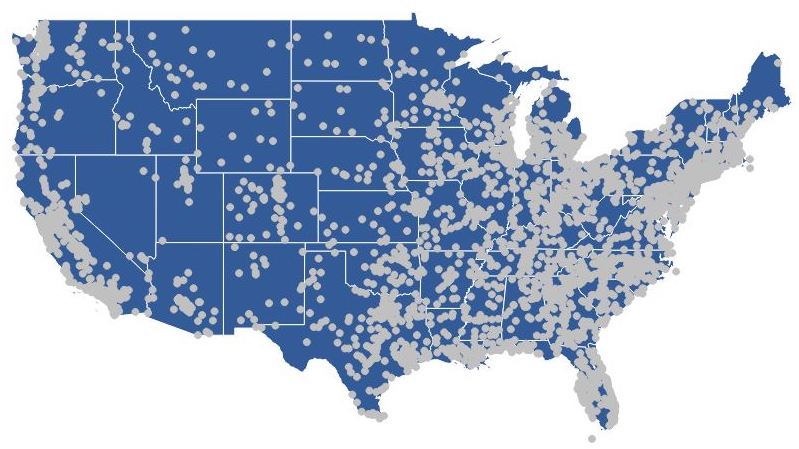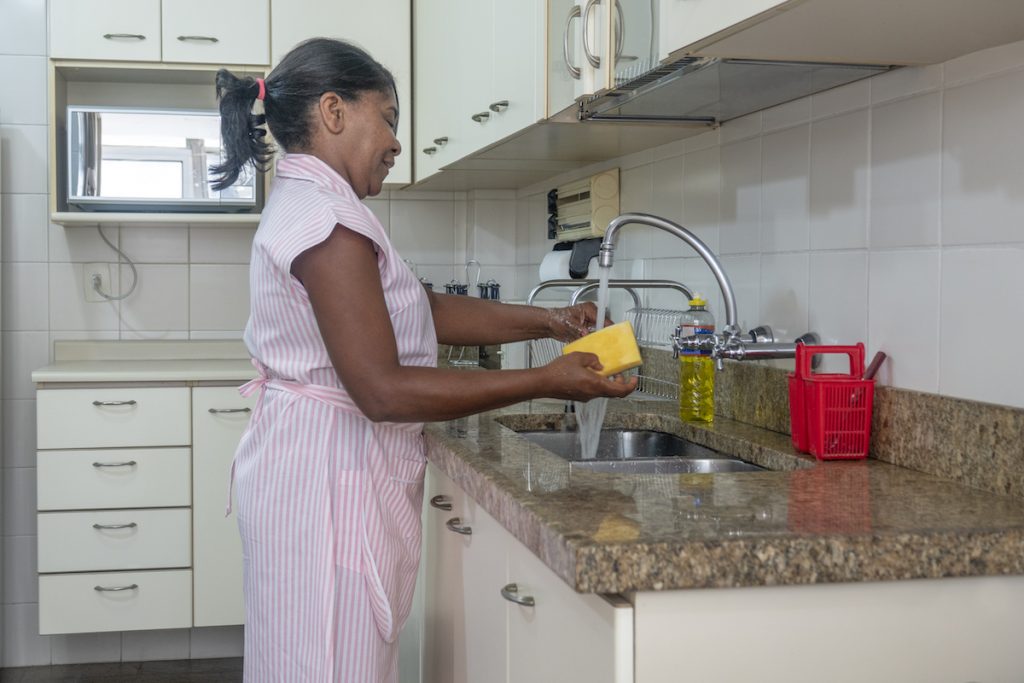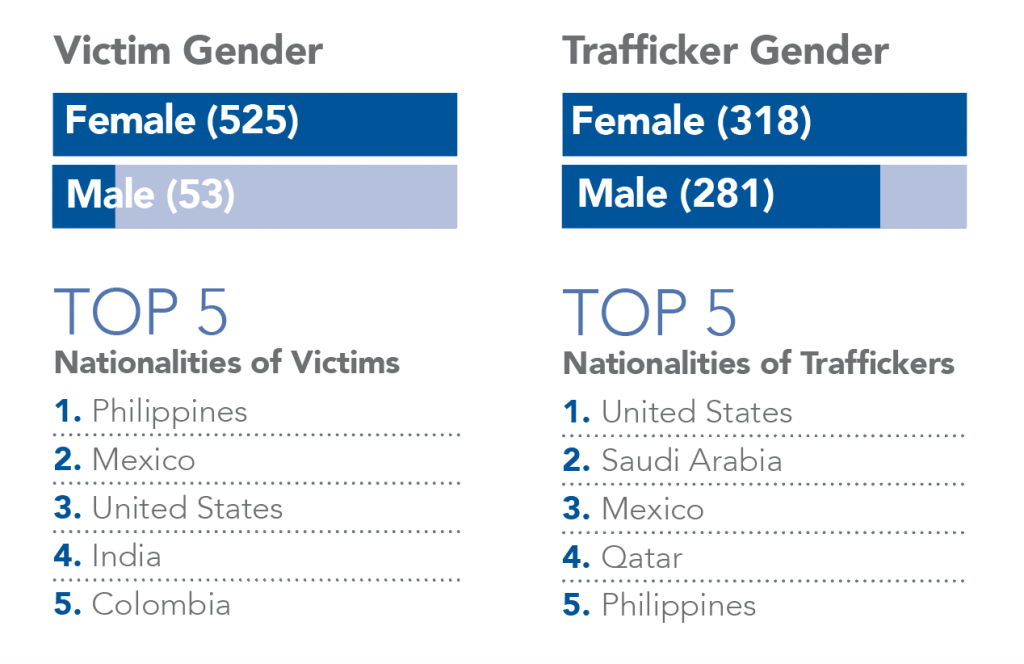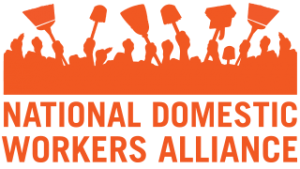Labor Trafficking of Domestic Workers
In a given year, an estimated two million plus domestic workers are employed in the United States, caring for children, seniors and other loved ones, cleaning homes and in general, making it possible for many busy people and families to juggle the competing needs of their lives. In most cases, these arrangements benefit both the workers and their employers. But isolated working conditions, limited legal protections and vulnerabilities including poverty and immigration status mean that some domestic workers become victims of labor exploitation and labor trafficking.
A joint report by Polaris and the National Domestic Workers Alliance examined records from the Polaris-operated U.S. National Human Trafficking Hotline to determine the scope of the problem. The data showed that of the approximately 8,000 labor trafficking cases identified between December 2007 and December 2017, the highest number of cases involved domestic work. That number likely represents only a small fraction of the problem, as human trafficking in all its forms is severely underreported.


Tina* had arrived on a work visa with her employer-trafficker who came to the United States for medical reasons. Tina was not allowed to own a phone or engage with any source of support. She was able to disclose her situation to community members while at a mall with the employer-trafficker’s children, who threatened to report Tina to their parents. One of the community members from the mall contacted the National Hotline.

Pat*, who arrived on a work visa, found herself working up to 20 hours a day despite her contract stipulating an eight-hour workday. Her employer-trafficker had possession of her passport, ID, and referrals, and she remained in her situation for a while, trying to retrieve them. Eventually, she fled without her documents. She reached the National Hotline from the shelter where she had taken refuge.

Maya* had been smuggled into the country when she was 16 years old. Upon arrival, she was handed over to the woman who paid her smugglers and was made a domestic servant. She was physically abused and regularly threatened that she would be reported to immigration authorities if she did not cooperate. One day, she fled and was able to contact the National Hotline via our online tip report.
Domestic Work in the News
A recent Texas case shows gaping holes in response and protections for domestic workers at risk. The son of the president of Guinea and his wife were recently sentenced to seven years in prison for labor trafficking. The facts of the case are profoundly disturbing, but they are not in any way surprising.
Human Trafficking in Domestic Work
Number of Individuals
1211 VICTIMS
1210 TRAFFICKERS
Type of Trafficking
93% LABOR TRAFFICKING
7% SEX & LABOR TRAFFICKING

Factors Enabling the Trafficking of Domestic Workers
Domestic workers have fewer legal protections under federal law than most other workers. They have been either explicitly or indirectly excluded from laws including the National Labor Relations Act, the Fair Labor Standards Act, the Occupational Safety and Health Act, Title VII of the Civil Rights Act and the Americans with Disabilities Act.
While nine states and the City of Seattle have passed version of a “domestic workers bill of rights,” most states and cities still lack enforceable frameworks to give workers power to negotiate for better wages and working conditions and a pathway to gain retirement security, access to health care and other basic rights.
Many domestic workers come to the U.S. legally on temporary work visas. Most of these visas are non-transferable from one employer to another. That means a worker is only legally present in the U.S. if they are working for the employer who originally hired them. If the worker leaves the job listed on their visa they are immediately eligible for deportation.
Immigrant domestic workers receive a “Know Your Rights” brochure before or when arriving for work in the United States which puts the sole responsibility for preventing themselves from becoming labor trafficking victims even though they are in an employer-employee power-imbalance situation in a new territory.
Special Thanks
This report was written in collaboration with the National Domestic Workers Alliance. The NDWA was established in 2007 to “work for the respect, recognition, and inclusion in labor protections of domestic and home care workers across the country.”

